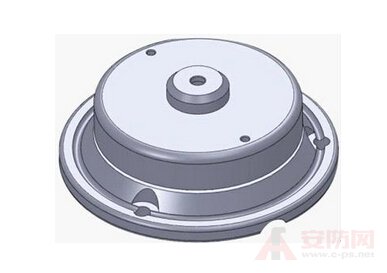During the use of the monitoring system, users often find problems with the backend due to sound output. The vast majority of these problems are not in the quality of the pickup itself. So how do you detect surveillance pickups? The entire monitoring system includes front-end (acquisition), intermediate (transport), and back-end (output storage). Then if there is a sound problem, it may be a problem in these three links. How to detect surveillance pickups 1. Exclude the front end The most straightforward way to test if a pickup has a problem is through front-end testing. Before the pickup is installed, please connect the pickup directly to the power supply (note that the pickup is preferably a DC-regulated 12V power supply, it is recommended to use the PW-V10 dedicated power adapter) and test it with headphones. There are two things to note when testing front-end. 1: Never use a switching power supply 2: Cannot be tested with a speaker (you can use headphones). Second, exclude the transmission end In the case where there is no problem with the front-end test pickup, we can measure whether there is a problem during the transmission. Under normal circumstances. If using cable transmission, we recommend that users use PVRX0.5 shielded cable. Various problems always occur in different monitoring environments or transmission processes. Use the recommended cable to avoid the trouble of re-drawing. The specific test is as follows: The pickup that has been connected to the audio line is directly connected to the earphone or speaker (not being able to access and power amplifier) ​​without being connected to any other storage device at the back end. There are a few points to note about the transfer process. 1: If your transmission distance is too long, please use PVVRX0.5 shielded audio cable. 2: Is there a slot in the process of wiring with strong electricity (wires for daily use)? 3: Is there a source of signal interference nearby (such as a radio station, a mobile signal transmitting station, etc.) 4: When the network camera is linked, whether the audio input on the device is linein input (buy the camera must ask whether the camera audio input port is linein or micin; the pickup can only access the linein<linear input> interface) Third, exclude the backend We can test if there is a problem with the backend device without any problems with the front end and the transfer process. There are three types of devices that are used primarily for back-end output/storage. 1: DVR (NVR), in general, several problems that may occur in the DVR include: unstable port wiring, input port impedance mismatch, system settings (some devices have two audio input modes, must Using the linein<linear input> mode, the vast majority of pickups on the market are linear inputs) 2: Speaker output, direct output from the speaker needs to pay attention to several problems, the speaker can not be too close to the pickup, can not use the amplifier output 3. Access to the server (computer host) need to pay attention to the input port to select the linein input, system settings and other issues. Using the exclusion method in the front, middle and back is believed to help you solve most pickup problems.
Product categories of Crimping Forming Machine,we are specialized
manufacturers from China, Crimping Forming Machine,sheet rollforming machine,
suppliers/factory,wholesele high-quality product of Crimping Forming Machine,
R & D and manufacturing , we have perfect after-sales service and technical support . Look forward
to your cooperation !
Crimping Forming Machine Crimping Machine,Curving Machine,Sheet Metal Crimping Machine,Crimping Forming Machine BOTOU HUATONG CORRUGATED MACHINERY MANUFACTURING CO.,LTD , https://www.htrollforming.com
How to detect if there is a problem with the monitoring pickup
[ Huaqiang Security Network News ]